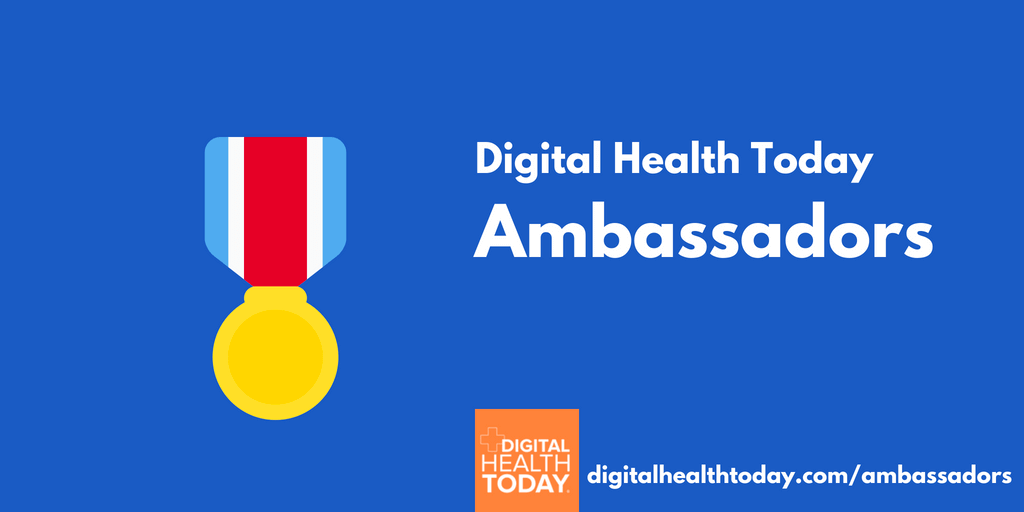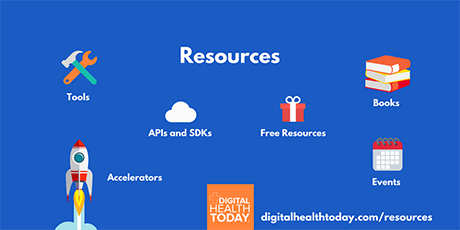Transcript
00:03 Tony Estrella
Welcome to Digital Health Today: Asia Pacific Edition, your go-to podcast to learn about the transformation of healthcare in a region with over 4.5 billion people across more than 40 countries. I’m your host, Tony Estrella. Today, I’d like to introduce Janice Chia. Janice is a passionate advocate for enabling the aging to maintain independence and live out the second half of their lives with dignity and high standards of health. Her work includes starting and running Aging Asia and ASPIRE55, creating an ecosystem of partners including Digital Health, and speaking frequently on the opportunities for the business of aging, and the impact on other industries, including real estate and consumer technology. Janice, welcome to the show.
00:44 Janice Chia
Hi, Tony. Thanks for having me today.
00:46 Tony Estrella
Hi, Janice. So let’s start with the topic of aging. You have an organization called Aging Asia. Tell us a bit more about your background. Why did you start this group?
00:56 Janice Chia
Well, I think any story about starting Aging Asia has to begin from my relationship with all the people in my own family, and very specifically, my grandmother. When I first started Aging Asia, I looked at people like grandma, and I looked at my parents, and then I looked at myself, and I thought, how am I going to age in the future? How are my parents going to age? I looked at the thoughts, the values, the expectations, and I saw that different generations had different expectations of how they would want to age. I felt like Asia wasn’t ready for people like my parents– and, in the future, like myself– to age. There weren’t enough products and services that could help us to age in the manner that we envision, which would be to be very independent, to maybe not live with the children, to engage in activities and travel, and to live well on our own.
When I look back at Grandma’s generation, her generation is one where we think of Asia as having traditional values of filial piety, and that means that grandma expected that as she grew older, we would give her all the support required. In Asia, that often means grandma would live with us in our house; we would look after her, we might hire a helper to tend to her additional needs as she got older, and we would virtually do everything for her as she got frail. That means the housework, the cooking, her activities– we will tend to all her needs, and she would just be supported by us. This felt to me like an opportunity to look at how these differences would reflect on the business sector.
That’s how Aging Asia came about. Because as traditional notions of filial piety change, children will no longer live with their parents, parents will be more empowered, and they will be more active, so they no longer need all these things that used to be looked upon as a burden for children to look after their parents– this will all fall apart. This comes as a tremendous business opportunity, because what are the opportunities out there for people to live in good health, to be independent, and to be dignified? This goes across technologies, housing models, and service innovations. To me, this translation of different generations’ expectations of aging represented this growing social and economic need for change. Aging Asia looks precisely at this. We look globally: what are the different eldercare models, products innovations out there, and how can we bring that all to Asia? So that’s the story of how Aging Asia first came about.
03:40 Tony Estrella
So the organization is based in Singapore, but you have a global focus. Over the last few years, we’ve gotten to know each other based on the events that you’ve run in which you bring together the ecosystem and community. The headline for how you describe Aging Asia is the “first industry alliance on the business of aging.” So tell us a little bit more. When you got this organization started and you looked at aging as a challenge and– going back to your grandmother’s story– tried to figure out what support structures are necessary, were did you start? Who are the stakeholders that you felt were most important to you?
04:13 Janice Chia
Honestly, I felt that from the beginning, I wanted to get the financial sector involved. So that was my first go to– financial services, the banks. And then I realized that there was a disconnect between what the banks thought aging was and what the rest of the aging organizations felt it should be.
A lot of aging organizations, increasingly, were beginning to see aging as a possible economic opportunity for all the different sectors. A lot of the banks out there thought aging was CSR, and literally I got put through to CSR departments whenever I spoke to the banking sector about aging. That was the early beginnings, but today, we’re now seeing that they see aging as a social-economic opportunity.
There are socially responsible investments in aging, but there is also a direct investment in the silver economy, because as people live longer, and as longevity increases, we saw an evolution of how banks started to see aging differently– and how a lot of companies started to see aging differently. Aging was a strategy that could expand their businesses, and aging (overall in society, if you look at all the media attention) gradually moved from being a social challenge towards being a social opportunity.
05:26 Tony Estrella
So let’s go back to the definition, and if there are misaligned definitions between various stakeholders. You also mentioned the term silver economy. If we look at the country dynamics, like in Japan, we talk about centenarians in developing markets. And the average age has been rising as wealth has been increasing. What’s your definition of aging?
05:46 Janice Chia
Well, my definition of aging is that it’s more like a journey. As we travel through this journey, our needs will change and it requires enablement, rather than just pure delivery of service. My definition of aging is that it’s a process that as we get older, we need more opportunities for independent living.
06:12 Tony Estrella
Great, I think that helps as a broad structure to think about the progression of where we are today as adults, and where we will be as we move into this silver generation, presumably because of the color of our hairs– defining silver.
06:26 Janice Chia
I think that’s it precisely. You see, when you think about aging, traditionally, it’s like grey hair, frailty, and getting weak. And that conversation is changing into empowerment, independence, and getting stronger as we age.
06:40 Tony Estrella
So as you’ve looked at various parties that are adopting and believe in the same enablement approach, who are you working with today in looking at aging? And in which countries are you finding that you’re getting alignment to say “that’s the vision of what an aging business should look like, this is how we’re empowering people”? Can you give us a couple of examples?
07:01 Janice Chia
When we think about aging in Asia, we always like to look at the super aging countries. More specifically, we always look towards Japan for what the models are doing– not just in terms of the private sector, but also in terms of government policies.
One example I always like to mention is that in Japan, the Ministry of Health works closely with the Ministry of Economy and Trade in that aging space. It’s a collaborative approach; any aging event will be attended by both industries. And I think that’s a very good example of a policy-level approach. When we look at companies in Japan, we know that because of the long-term care insurance policies in Japan, the private sector has had a leg up in that sector as they have been investing in it very heavily– because of the continued support of the long-term care insurance policy. But if we look at companies on the company level, then we look at technology innovations, robotics, assisted living products, mobility products– there’s a lot of innovations coming out of Japan (and also coming out of Taiwan, as well as Korea) that are leading in that space.
If we look at opportunities for Asia, one thing is who is going to pay for all these products and services? Unless we can develop that, we are purely looking at the middle-income to higher-income classes that will be able to pay for all these wonderful products and innovations that are going to come out into the market. Hence, I think that for the sector to really grow to the next level, we need a combination of government policies as well as private spending,
08:41 Tony Estrella
The ability to pay for solutions and innovation I think are nice to have when we look at the future and how we’re creating impact. As someone who’s worked in this space of disruptive change, I always bring things back to, what’s the consumer problem or the individual problem we’re trying to solve? So can you categorize for us what some of the bigger problem areas are that you look at? And that you’ve seen organizations, government, and the private sector looking at, as the core problems of aging that need to be solved?
09:09 Janice Chia
I think different people wear different lenses. Let me put on the lens of a grandchild that was a caregiver to my grandmother, and use that example for a specific area– let’s say, how can we help older people to age in a more dignified manner? I think everything is okay throughout most of the aging journey, until the last 12 months of someone’s life. That’s where a lot of challenges to maintain the dignity of the older person comes in. How do they shower, how do they go to the toilet? How do they cope with not being able to do things on their own, that emotional weakness that they feel, to have someone else take over [inaudible] and do things for them?
So when we look at dignified aging, I see what products are out there that can help with this process. In Japan, they’ve developed products that can help a person with toileting. Even if they have a stroke and they are bedridden, there are technology products available that can help them with that versus wearing a diaper. Although in Japan the adult diaper market surpasses the children’s diaper market, wearing a diaper is not an aspirational aging goal. You don’t want that, and you hope that you never see that situation. But if we just look at the wearing of diapers, we can also look at how we can delay the situation where older people have incontinence challenges, and that in itself is a market opportunity.
That brings us over to healthy aging. Are there programs or exercises possible that help a person to maintain their pelvic muscles so that as they age, the chances of them having to wear diapers or experienced toileting issues is reduced? So every opportunity that I see is trying to solve a challenge. That challenge of dignified aging brings on challenges, opportunities of healthy aging, and keeping you stronger so that you don’t have to face this challenge.
11:05 Tony Estrella
So that’s the mindset of your caregiver– looking at how to help people and the products that come about. What about the mindset of the individual themselves who are getting older? You run a group called ASPIRE55. Tell us a little bit more about what have you learned in speaking to and interacting with people who are progressing in their age. How do they think of their lives and what they want to aspire to?
11:26 Janice Chia
So ASPIRE55 is the first virtual retirement village. It’s essentially a social health community that tries to change the lifestyle habits of sedentary older people. Most of the people that join the village activities are looking for a way that they can get into a regular regime of strength training exercises. But what we’ve learned from the people coming in is overcoming some of the initial preconceptions we had about this population. There’s a lot of preconceptions. For example, when older people age, they will become a retiree, and a retiree means that they want to engage in volunteerism, or they want to do gardening– these are some things that we think other people want. But that wasn’t true. What we saw was that every older person is different, and everyone has different expectations of how they want to age.
It’s different from the children’s market, where you can divide children into certain age groups, and they will have different development needs. Whereas for an aging population, somebody who’s of the age of 60-70 and 70-80, you can’t really classify them into different development phases, because they’re all different. An 80-year-old could be a lot fitter than a 60-year-old. We can see a 90-year-old walking well on their own and a 65-year-old using a walking cane for support. So that’s very, very different.
You know, some of the things that we thought– like perhaps everyone likes being part of a community, and they like the conversations and making new friends– weren’t true. 90% of the people that came to us said “I don’t necessarily need to make new friends, I have my own support community already.” But because they accidentally have some like-minded conversations, and it’s not deliberate, they do end up making new friends in the community, but it’s not forced. You can’t really say that we want them to do this, this, this, this, and this; you have to let things happen in a very organic manner, and you have to let the social communities form because they have like-minded conversations. It’s not that easy to say that we would have one service for all seniors, because that wasn’t going to happen.
So ASPIRE55, you can look at it as an experimental model for aging-in-place solutions. We wanted to allow older people to age in their own homes, so that aging would be affordable, and they would be most comfortable in the environment that they are most familiar with. When they come for activities or in the clubhouse, where they do the strength training exercises, they would then make some accidental connections because of the small groups that they have.
I think just to summarize, one thing that ASPIRE55 does in this very big aging world is to divide everyone into smaller communities and into small groups that resemble their own families. ASPIRE55 wanted to be like the second family to many seniors who are living at home. But there are a lot of females because of feminization of aging. There are also a lot of singles. Changing lifestyle habits means that people are married later, or choosing to be single, or choosing not to have children. This represents globalization as well, because seniors used to age with five to six children, and today’s seniors are aging with no children, or maybe one or two that are not even living with them– they are living overseas. So they are going to be a group that knows that they have to be very, very independent, but how will they extend their healthy life years? That’s a big question for them.
14:59 Tony Estrella
Yeah. The comment you made about having to connect and having it be organic as opposed to being forced is a really helpful insight. Because putting seniors together for the sake of wanting to help isn’t necessarily the answer. They don’t necessarily view themselves as seniors or as needing help.
With the rise of chronic disease and how people’s health is starting to become more affected, how do you link those together? How do you link people who want their independence, want to be healthy, but now may need a little bit more attention because they’re getting sick, and also don’t necessarily want someone to just be directive towards them? What are the programs you’re seeing that help bridge those three independent thoughts into one cohesive way to help the aging?
15:45 Janice Chia
I think that generally, what we’re seeing currently are still programs that cater more to the frail, to those with more clinical support needs, like dementia (from moderate to severe dementia). What we’re seeing is a new generation of seniors– I would call them the “more empowered older person”– and they are better educated, well-traveled, and they actually look to a lot of their own resources to plan their aging process. And very, very differently, they expect to plan their own aging journey, whereas my grandma’s generation expected us to plan her aging journey. So the new generation of older people want to avoid being a burden on the people around them, whoever their caregivers are: maybe a niece, or daughter, or grandchild. They want to avoid that burden (emotionally, financially), and they want to overcome all this, because they’ve seen how their parents age and their grandparents age, and they don’t want themselves to age in that manner.
I think because of that, they are leading that change, and they are hungry for more information. They are hungry for more products that help them not to be a burden. If you turn it around positively, they want to be independent, and they’re open to the use of technologies, which I think is very positive. What COVID has shown us is that it’s made that curve even faster, that adoption curve, because previously, there was more resistance. But today we’re finding that because of COVID, with something simple like telemedicine, they’re quite comfortable with seeing their doctors online now to treat clinical ailments. What that translates to for chronic disease self-management is that they will be comfortable seeing their doctors on a quarterly basis to get their medications via telemedicine, instead of having to traditionally go into a clinic and maybe even be exposed to viruses. They don’t mind that they can do it in the comfort of their homes. These are a lot of changes, and I think it’s a transformation for how we’re going to see the entire industry evolve in the next 12- 18 months, to catch up on this curve.
Older people are not a group that we need to look after, but older people are proving that they want to look after themselves. With the knowledge that they are acquiring now, they’re trying to be their own mini healthcare professionals, and I think now is the time where we can equip these older people with that knowledge.
18:04 Tony Estrella
Yeah. You made a comment in one of the things I read about you, which is that your view is that aging is not one homogenous market. It’s an ecosystem of different types of businesses. We talked earlier about the role of innovation, and you just made a comment as well, about how the aging are more open to technology. So when you think about the various markets, do you have a categorization or two or three big categories within this broader aging category?
18:34 Janice Chia
Definitely. I think in this ecosystem, we’ve narrowed it down to a couple of big picture categories that will have big market potentials.
First, is looking at dementia. Dementia we look upon usually in a more clinical way– the interventions and how to look after people when they have dementia. But I think about it more broadly; what is the business of dementia? And in this area, a couple of things we can look at is how we improve care and how we enable daily living (or just look after them in a place), to ensure that they can look after themselves and to ensure that we can help them to slow down those conditions.
will classify them into three areas. One is the business of pre-dementia; the business of mild to moderate dementia; and then the third one is the business of severe dementia. Within each broad category, we can further segment it. For example, if we look at the business of pre-dementia that looks at the general population that’s aging in good health, how do we ensure that they continue to have this good health and not fall into the next category and experience decline? In this area, that particular business points to creating senior health and wellness clubs, health monitoring technologies, specialist clinics for preventive health care and chronic disease management.
Then we look at the second area, which is the business of mild to moderate dementia, and this is for those who already have some signs of slowing in their cognitive abilities. What we want to do is to increase the social interactions and connections and have a support network for them. In this particular area, creating those social support networks, regular activities, as well as home monitoring technologies to make sure that they are safe and they don’t fall down or suffer a further decline, this would be another area.
The last one would be for those with very severe dementia that prevents them from living at home. How are we creating these new housing and care models for those with severe dementia needs to have a safe and supportive living environment? Globally, we all know about the Hogeweyk, which is this model in Amsterdam, which builds a lot of activities and services within this community that are safe for someone with severe dementia to be able to wander freely and engage in activities they enjoy– from supermarketing [sic], or to enjoying arts and crafts, or cooking or singing. But they don’t feel that they are being cared for– they feel that they are taking part. The use of daily activities is very important. There’s a lot of thinking that goes into putting together daily activities for an older person, so they feel like they are engaged but not being told what to do. So that’s one example of that big category of dementia.
21:24 Tony Estrella
And then what about the other categories, beyond dementia?
21:27 Janice Chia
The second one that’s most important, I think, would be business-of-care technology. This relates to assistive, operational, companion robotic technology.
Just to touch on this– because the care sector has always been very manpower intensive and is always about “how much personal care [do I need to] look after an older person”, there is a fair level of resistance from the care sector workforce about whether or not technologies will replace them. Will robots replace care workers in the future? Will the senior be faced with seeing a robot look after them, 24 hours a day? That’s fairly impersonal, and many care workers come into the sector because they have that heart for the sector and they want to deliver that person-centered approach to care. So I think when we look at the business-of-care technologies it’s very important to share with the care sector that these robots are meant to complement and to help the care force.
By having the robots do the operations work, assistive work, and heavy lifting, the staff will then have more time for care and social engagement for the seniors. If you have robots that can look after infection control management, robots that can do cleaning, robots that can do heavy lifting– reduce some time when you are transferring clients into bathtubs or transferring them into bed– that’s more time to say, sit down and have a chat with that older person, which is what the human-to-human interaction is most about.
When we look at business-of-care technologies, I think we can look at four very broad areas: rising demand for cloud communication, telehealth remote business, and remote clinical functions; demand for assistive technologies to support the care workers with client monitoring; demand for smart home, intelligent technologies to help them live with greater independence; and demand for companion robots. In between, when staff are a little busier, or when there’s some quiet time, these care companion robots can do various things. For example, they can call up their loved ones on video conferencing calls, or even engage in some exercises or virtual reality that can bring them to different places. So these are some broad areas.
23:46 Tony Estrella
With a market where we’re looking at the number of people going to 425 million globally by 2050, for being aged 80 and over, the two broad areas you described could be enormous opportunities for helping individuals and creating a broad industry where stakeholders can have real sustainable and scalable business models, as well.
24:10 Janice Chia
Definitely, I mean, this is a growing sector. But I think my problem with aging is that people see aging as potentially one industry class in the overall ecosystem, but actually aging overlaps every sector and every industry; that impacts your transportation industry or communications, your travel and tourism. So, everything.
24:34 Tony Estrella
Yeah, and I think more to come on that one when we have a follow-up conversation, because I think we can go in so many different directions with this subject. We’re coming up on time here. I have one more question for you. There are so many paths you said we could go into, and in this pandemic, we’ve seen a lot of positive change in terms of adoption of technology in the aging. Do you have any other predictions as to the next 12 months or next 24 months? What will become another positive outcome of this pandemic, relative to the opportunities for enabling the aging to live better lives?
25:08 Janice Chia
I think immediately– in relation to the pandemic and from the observations we’ve seen globally– we’re going to see the business of senior living and care communities rise. Why? Because senior living and care communities essentially mean that seniors are being put in groups that can be bubble-protected in the event of a pandemic but still offer them that social interaction and semblance of normalcy within that secure community. It allows for efficient delivery of services within these smaller communities. And I’m not saying 2,000 seniors gather in one place, but I’m seeing the rise of communities that provide support for maybe 200 to 300 seniors. This can take place in the form of retirement villages, nursing homes, or even the virtual retirement village communities in which you have people within one housing complex.
So the need for more of these “bubble” living environments where seniors can be safely grouped into small communities will drive the real estate sector to think a little bit differently now. As they are building houses, are the houses really suitable for the aging population demographics so that as people age, it’s efficient and they don’t need to keep moving? I’m looking for “life apartments,” where you move in at 60 and you never have to move out, and service providers come to deliver services efficiently.
I think that could be one of the next stages resulting from this pandemic. It’s a model that’s not about just saying that all seniors move into this community and won’t be isolated; it’s more that seniors move into this community and they will be protected, they will be given support, and they will be able to age in a better manner than just living sporadically across the island.
27:05 Tony Estrella
And to your point earlier, finding like-minded people who have shared interests to improve the quality of their life.
27:11 Janice Chia
Definitely.
27:12 Tony Estrella
Well, thank you so much for joining us. If our audience would like to get in touch with you, are you on LinkedIn? Or is there any other resource that they can use to get a hold of you?
27:20 Janice Chia
Sure, you can find me on LinkedIn, or they can look for Aging Asia on LinkedIn or ASPIRE55. We have various channels available, so just Google us and you’ll be able to find a way to connect with us. Or they can simply drop us an email.
27:34 Tony Estrella
Okay, great. Well, we’ll put links to all of those in the show notes. Thank you so much for all your time, Janice, I appreciate this conversation. I look forward to speaking with you again. I think we’ll have a conversation on dementia sometime in the future, given what you described and how complex that challenge is as well, as we look at countries like China and Japan. But more to come. Thank you again.
27:54 Janice Chia
Thank you very much, Tony.
27:55 Tony Estrella
And that’s a wrap on this episode. As I mentioned, the show notes contain links for reaching Janice and all her organizations. It also includes a link for a report which helps provide more details on the insights Janice gave to us today. It’s the fourth Asia Pacific Silver Economy Business Opportunities Report, published by Aging Asia. Before I go, here’s how you– our audience– could support us. Please share this podcast with others. And if you subscribe, you’ll get updates on new episodes and other content. Through my website, www.tonyestrella.com, you can learn more about my writing and links to reach me on Clubhouse, Twitter, WeChat and LinkedIn. And finally, please visit our website at digitalhealthtoday.com to hear other episodes from our podcasting team. This show is researched and written by Taliossa and produced along with Mission Based Media. The sound and music was by Ivan Juric.
And until next time, I’m Tony Estrella, and thank you for listening.




